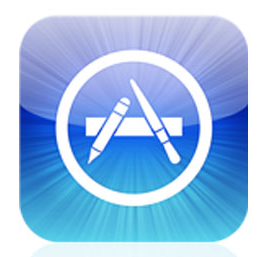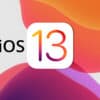Now that you have decided to build an iPhone app, you will be both excited and just a little bit nervous as well. Don’t worry, I was a nervous wreck when I decide to develop my first iPhone app, but I got out of jail, just about. I had a solid support system in place in the form of my colleagues, friends and family, and although I made mistakes, I came out a better developer at the end of the whole iPhone app development process.
Now I am sure that as a beginner you also have a support system in place, and are rolling up your sleeves in anticipation of the battle between your skill sets and the iPhone development ecosystem. So, you need to ask yourself, whether you are prepared to weather the storm, because the iPhone and the iOS are going to come out at you, all guns blazing.
Here are 3 considerations that beginners need to keep in mind, if you want to develop a successful iPhone app.
Client Brief Should Be Optimally Harvested
When I was developing my first iPhone I was so excited by the prospect that I failed to give importance to the clients brief. The problem wasn’t that I didn’t understand what the client wanted, but that I didn’t really do enough research on it; I understood everything that the client wanted the app to do, but I didn’t do my own bit of research into his needs and requirements.
What this would have done was given me an overview of the feasibility of the project. I would have known clearly whether it was possible to bring to life the client concept in its entirety on the iOS platform. It was only when I was halfway through the project that I realized that some of the functionalities that the client wanted, were just not possible, for e.g. I was working with iOS 5 and it didn’t really have deep Facebook integration, which was an important app requirement. I needed to rework my development process a bit because of that.
Its small things like this that can derail an app project. Today, when I look back at it, the fact that iOS 5 didn’t have deep Facebook integration is so obvious, but back then, I wanted to please the client, so I said yes, when I should have known better.
Narrow It Down
Excitement and nervous energy does funny things to you. It makes you want to do more, a whole lot more, when it comes to app development. As a beginner, you will want to prove your mettle and that’s good, but this at times, leads to mistakes that you can very well avoid.
An iPhone app or any other app for that matter is only good if it’s usable, and this means that it shouldn’t have needless complications. For e.g. if 5 features are enough to realize the app’s objectives, you don’t really have to push in 2 more, just to prove that you can do it. Narrow your vision down as much as possible; this will have you focusing more on the essentials and help you keep the non-essentials at bay.
While developing for the iPhone bear in mind that you don’t have an endless amount of screen real estate; its limited and you need to keep it clean. If you clutter, you lose the plot. You are not proving anything to anybody by packing an app with features and functionalities; all you will be doing is putting the end user off. This user wants you to focus on usability and offer them only those features that will allow them to perform the designated tasks, quickly and conveniently.
That’s it, so don’t do anything different.
Focus On User Experience
Success doesn’t happen without a satisfying user experience, and this fact remains true for all products and services. Agree, your iPhone app needs to be client oriented, meaning it needs to be built to satisfy all client objectives, but it should also be user defined. As newbie, I was too client focused to realize that the needs of the user are also of significance. It’s pretty simple really, if you don’t know what the user wants, how are you going to ensure that they like the app.
So, what you will first need to do is getting your hands on all those diagramming software available out there and start designing user interfaces. This will help give you a clear idea of what will work for the user and what won’t. Think of it very simplistically. You want to get a user from point A to point B; A here is ‘start using the app’ and B is successfully ‘completing a task on the app’. How will you get a user from A to B in the easiest possible manner? That is what user experience is all about.
Drawing a detailed mockup, a prototype, if you will, of the app is a best idea. Focus on how to make your app as usable as possible. Remember to determine a user flow that the app user will be familiar with. Don’t make the user think about what to do next.
End Words
I can go on, but I don’t want to, because I believe one must end somewhere. Also, this is something that beginners have to keep in mind as well; you can’t just keep adding onto the features of an app, just because you can. You need to know when to stop. That is how you can develop a successful iPhone app. So, all the best….and develop a cracker of an app.
Samara Hayden is a professional iOS app developer and has worked on many iPhone and iPad application development projects. She loves traveling and loves visiting places that are miles away from civilization.























































































































































































